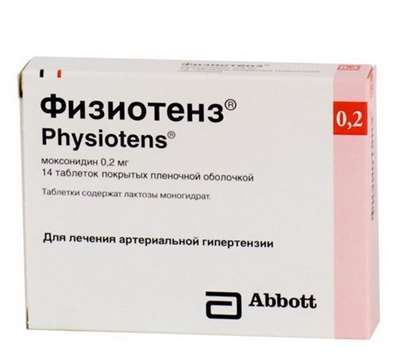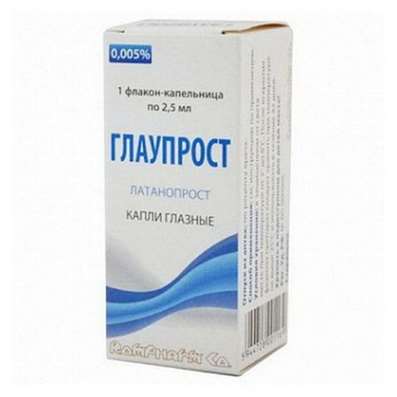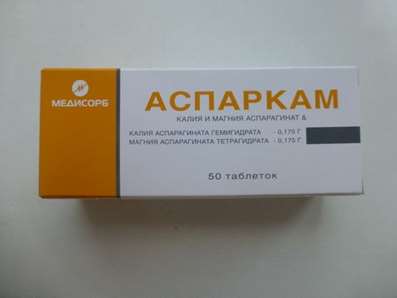Instruction for use: Neostigmine methylsulfate (Neostigmini methylsulfas)
I want this, give me price
Chemical name
3 - [[(Dimethylamino) carbonyl] oxy] -N, N, N-trimethylbenzenium methyl sulfate
Pharmacological group
M-, n-holinomimetiki, incl. Anticholinesterase agents
Nosological classification (ICD-10)
G09 Consequences of inflammatory B91 Consequences of poliomyelitis
Poliomyelitis consequences, Post-poliomyelitis syndrome
G03.9 Meningitis, unspecified
Arachnoiditis, The consequence of meningitis, Serous meningitis, Cerebral meningitis, Meningitis subacute
G09 diseases of the central nervous system
Consequences of meningitis
G70 Myasthenia gravis and other disorders of the neuromuscular synapse
Myasthenic syndrome, Myasthenic syndromes, Myasthenia gravis, Myasthenic syndrome, Severe myasthenia gravis (Myasthenia gravis)
G83 Other paralytic syndromes
Paralysis, Peripheral paralysis, Brown-Sekara Syndrome, Brown-Sekar Syndrome, Hemiparaplegic syndrome, Syndrome of half damage to the spinal cord, Peripheral paralysis of striated muscles
H40.1 Primary open-angle glaucoma
open-angle glaucoma, Open-angle glaucoma, Primary glaucoma, pseudoexfoliation glaucoma, Elevated IOP
H47.2 Atrophy of the optic nerve
Atrophy of the optic nerves, Leber's disease
K59.8.0 * Atony of the intestine
Atony of the duodenum, Atony of the gastrointestinal tract, Atony of the intestine, Atony of the intestine after operations, Atony of the intestine after childbirth, Atony of the musculature of the gastrointestinal tract, Sluggish peristalsis of the large intestine, Sluggish peristalsis of the colon, Hypotension of the duodenum, Hypotension of the intestine, Hypotension of the large intestine, Hypotonia of the large intestine, Constipation of various etiologies, due to hypotension of the gastrointestinal tract and flaccid peristalsis of the large intestine, Violation of the promotion of intestinal contents, Postoperative atony of the stomach, Postoperative intestinal atony
M79.2 Neurology and neuritis, unspecified
Pain syndrome with neuralgia, Brachialgia, Occipital and intercostal neuralgia, Neuralgia, Neuralgic pain, Neuralgia, Neuralgia of intercostal nerves,Neuralgia of the posterior tibial nerve, Neuritis, Neuritis traumatic, Neuritis, Neurological Pain Syndromes, Neurological contractures with spasms, Acute neuritis, Peripheral neuritis,Post-traumatic neuralgia,Severe pain of a neurogenic nature, Chronic neuritis, Essential neuralgia
N31.2 neurogenic bladder weakness, not elsewhere classified
Urinary incontinence in a stressful situation, Atony of bladder, Atony of the bladder (the sphincter) (neurogenic), Impaired function of the sphincter of the bladder, Neurogenic bladder disorders, Neurogenic bladder disorder, Neurogenic bladder, Functional insufficiency of the sphincter of the bladder, Imperative incontinence
O62.2 Other uterine inertia
metroparalysis; The weakness of labor activity; Decreased uterine tone; Induction of labor; Induction of labor at term; Induction of labor at term or near term; Activation of labor
T90.5 Effects of intracranial injury
Condition after traumatic brain injury, Conditions after traumatic brain injury, Traumatic encephalopathy, Residual effects of traumatic brain injury, Recovery after traumatic brain injury, Conditions after traumatic brain injury
Y55.1 Adverse reactions in the therapeutic use of muscle relaxants [skeletal muscle n-cholinoreceptor blockers]
Z100 * CLASS XXII Surgical practice
Abdominal surgery, adenomectomy, Amputation, Coronary angioplasty, Angioplasty of the carotid arteries, Antiseptic skin treatment for wounds, Antiseptic Hand, Appendectomy, atherectomy, Balloon coronary angioplasty, Vaginal hysterectomy, The coronary bypass, Interventions in the vagina and cervix, Interventions on the bladder, Intervention in the mouth, Restoration and reconstructive surgery, Hand hygiene of medical personnel, Gynecologic surgery, Gynecological intervention, Gynecological surgery, Hypovolemic shock during operations, Disinfection of purulent wounds, Disinfection of wounds edges, Diagnostic intervention, Diagnostic procedures, Cervical Diathermocoagulation, Long-surgery, Replacing the fistula catheters, Infection in orthopedic surgery, Artificial heart valve, cystectomy, Short-term outpatient surgery, Short-term operation, Short surgical procedures, Krikotireotomiya, Blood loss during surgery, Bleeding during surgery and in the postoperative period, Kuldotsentez, laser photocoagulation, laser coagulation, retinal laser coagulation, Laparoscopy, Laparoscopy in Gynecology, CSF fistula, Small gynecological operations, Small surgical procedures, Mastectomy and subsequent plastic, mediastinotomy, Microsurgical operations on the ear, Mukogingivalnye operation, suturing, Minor surgery, neurosurgical operation, Immobilization of the eyeball in ophthalmic surgery, testectomy, pancreatectomy, Perikardektomiya, The period of rehabilitation after surgery, The period of, convalescence after surgery, Percutaneous transluminal coronary angioplasty, Pleural thoracentesis, Pneumonia postoperative and posttraumatic, Preparation for surgical procedures, Preparation for surgery, Preparation of the surgeon's hands before surgery, Preparation of the colon for surgical procedures, Postoperative aspiration pneumonia in neurosurgical and thoracic surgery, Postoperative nausea, Postoperative bleeding, postoperative granuloma, postoperative shock, The early postoperative period, myocardial revascularization, Radiectomy, gastric Resection, bowel resection, uterine Resection, liver Resection, enterectomy, Resection of part of the stomach, Reocclusion of the operated vessel, Bonding tissues during surgical procedures, Removal of sutures, Condition after eye surgery, Condition after surgery, Condition after surgery in the nasal cavity, Condition after gastrectomy, Status after resection of the small intestine, Condition after tonsillectomy, Condition after removal of the duodenum, Condition after phlebectomy, Vascular surgery, Splenectomy, Sterilization of surgical instruments, Sterilization of surgical instruments, sternotomy, Dental surgery, Dental intervention in periodontal tissues, strumectomy, Tonsillectomy, Thoracic surgery, total gastrectomy, Transdermal intravascular coronary angioplasty, Transurethral resection, Turbinektomiya, Removal of a tooth, cataract surgery, Removal of cysts, tonsillectomy, Removal of fibroids, Removing the mobile primary teeth, Removing polyps, Removing broken tooth, Removal of the uterus body, Removal of sutures, Urethrotomy, Fistula likvoroprovodyaschih ways, Frontoetmoidogaymorotomiya, Surgical infection, Surgical treatment of chronic limb ulcersm, Surgery, The surgery in the anal area, The surgery on the colon, Surgical practice, The surgical procedure, Surgical interventions, Surgery on the gastrointestinal tract, Surgical procedures on the urinary tract, Surgical procedures on the urinary system, Surgical intervention of the genitourinary system, Surgical procedures on the heart, Surgical manipulation, surgery, Surgery on the veins, Surgical intervention, Vascular surgery, Surgical treatment of thrombosis, cholecystectomy, Partial gastric resection, transabdominal hysterectomy, Percutaneous transluminal coronary angioplasty, Percutaneous transluminal angioplasty, Coronary artery bypass, tooth Extirpation, Extirpation of milk teeth, pulpectomy, pulsative cardiopulmonary bypass, tooth Extraction, teeth Extraction, cataract extraction, Electrocoagulation, endourological intervention, episiotomy, Etmoidotomiya, Complications after tooth extraction
Code CAS
51-60-5
Characteristics
White crystalline powder of bitter taste, odorless, hygroscopic, in the light acquires a pinkish hue. Very easily soluble in water (1:10), easily - in alcohol (1: 5). Molecular weight 334.39.
Pharmacology
Pharmacological action - anticholinesterase.
It binds to the anionic and esterase centers of the molecule of acetylcholinesterase, reversibly screens them from acetylcholine, as a result of which its enzymatic hydrolysis stops, acetylcholine accumulates and intensifies the cholinergic transmission. Narrows the pupils, reduces intraocular pressure, causes spasm of accommodation, bradycardia, increased tone and contractility of the smooth muscles of the bronchi (up to bronchospasm), gastrointestinal tract and bladder (uterotonizing effect), increased secretion of bronchial, digestive, including salivary, sweat and other exocrine glands; Facilitates neuromuscular transmission, but in large doses can inhibit it (a persistent depolarization of the postsynaptic membrane of the skeletal membrane, including the respiratory musculature, develops). In therapeutic doses, it does not have a central effect, because It is difficult to penetrate the BBB (in toxic doses depresses the central nervous system). Has direct cholinomimetic effect on cholinergic receptors of skeletal muscles, vegetative ganglia and neurons of the central nervous system.
It is hydrolyzed by cholinesterase and is metabolized by microsomal enzymes in the liver. In the blood, 15-25% binds to proteins (albumin). After the / m introduction is rapidly absorbed and eliminated. In the study, 5 patients with myasthenia gravis Cmax were reached after 30 min, T1 / 2 was 51-90 min. Approximately 80% was excreted in the urine for 24 hours: 50% - unchanged and 30% - in the form of metabolites. With IV injection of T1 / 2 from the plasma - 47-60 minutes (an average of about 53 minutes). When administered orally, it is poorly absorbed from the digestive tract (usually a 15 mg dose given internally is equivalent to a 0.5 mg dose administered parenterally). In a study in patients with myasthenia on a hungry stomach, increasing the dose to 30 mg increased the absorption by only 1-2%. Cmax was recorded after 1-2 h; T1 / 2 - 42-60 minutes (an average of 52 minutes). The therapeutic effect with the / m administration usually manifests itself in 20-30 minutes and lasts 2.5-4 hours; With enteral administration, the effect develops more slowly, but lasts longer than after parenteral.
Indications
Myasthenia gravis, motor disorders after brain trauma, paralysis, recovery period after meningitis, poliomyelitis, encephalitis, weakness of labor (rarely), open-angle glaucoma, optic nerve atrophy, neuritis; Atony of the gastrointestinal tract, atony of the bladder. Elimination of residual disorders of neuromuscular transmission by nondepolarizing muscle relaxants.
Contraindications
Hypersensitivity, epilepsy, hyperkinesis, ischemic heart disease, bradycardia, arrhythmia, stenocardia, bronchial asthma, severe atherosclerosis, thyrotoxicosis, gastric and duodenal ulcer, peritonitis, mechanical obstruction of the gastrointestinal tract and urinary tract, prostatic hypertrophy, period of acute infectious disease, intoxication Weakened children.
pregnancy and lactation
When pregnancy is possible, if the expected effect of therapy exceeds the potential risk to the fetus.
The action category for fetus by FDA is C.
At the time of treatment should stop breastfeeding.
Side effects
From the nervous system and sensory organs: headache, dizziness, convulsions, weakness, loss of consciousness, drowsiness, miosis, impaired vision, dysarthria.
From the cardiovascular system and blood (hematopoiesis, hemostasis): arrhythmia, brady- or tachycardia, AV-blockade, nodal rhythm, nonspecific changes on the ECG, syncope, cardiac arrest, lowering blood pressure (mainly with parenteral administration)
On the part of the respiratory system: increased pharyngeal and bronchial secretion, dyspnea; Respiratory depression up to a stop, bronchospasm (mainly with parenteral administration).
On the part of the digestive tract: hypersalivation, spastic reduction and strengthening of intestinal peristalsis, nausea, vomiting, flatulence, diarrhea.
Other: tremor, spasms and twitching of skeletal muscles, including twitching of the muscles of the tongue, arthralgia; Increased frequency of urination; Profuse sweating; Allergic reactions (face hyperemia, rash, itching, anaphylaxis).
Interaction
Atropine, metocinia iodide and other m-holinoblokatory weaken m-cholinomimetic effects (narrowing of the pupil, bradycardia, increased motility of the gastrointestinal tract, hypersalivation, etc.). Lengthens and intensifies (with parenteral administration) the effect of depolarizing muscle relaxants (suxamethonium iodide, etc.); Weakens or eliminates - antidepolarizing.
Overdose
Symptoms: cholinergic crisis - hypersalivation, miosis, nausea, increased peristalsis, diarrhea, frequent urination, twitching of the muscles of the tongue and skeletal muscles, increasing muscle weakness, extending to the respiratory muscles (possible fatal outcome).
Treatment: the administration of atropine (1 ml of 0.1% solution), methocinium iodide and other anticholinergic agents (against a background of dose reduction or discontinuation).
Precautions
With caution appoint with arterial hypotension, recent coronary occlusion, vagotonia, Addison's disease, against the background of anticholinergics, in children (with myasthenia gravis) against neomycin, streptomycin, kanamycin and other antibiotics with antidepolarizing effect, local and some common anesthetics, antiarrhythmic And a number of other drugs that disrupt the cholinergic transmission.
When parenteral administration of large doses, it is necessary (preliminary or simultaneous) administration of atropine. If a myasthenic (with insufficient therapeutic dose) or cholinergic (due to an overdose) crisis occurs during treatment, careful differential diagnosis is required because of the similarity of the symptoms.

 Cart
Cart





